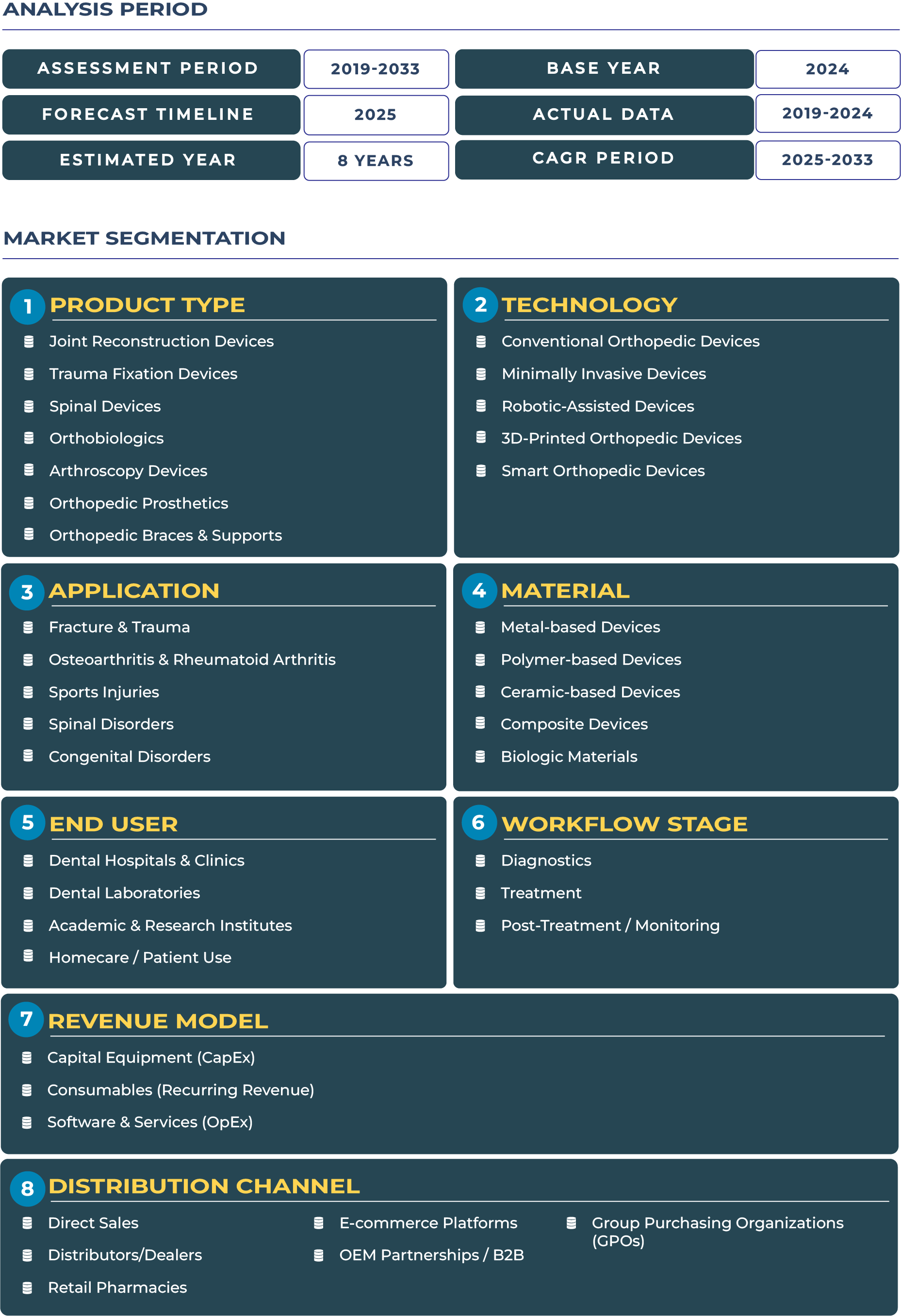UK Orthopedic Devices Market Outlook: Balancing NHS Cost Controls with Innovation in Advanced Implants
The UK orthopedic devices market is distinguished by the unique role of the National Health Service (NHS), which governs not only healthcare delivery but also procurement and pricing dynamics across the industry. Unlike markets where private care drives rapid innovation, the UK ecosystem is shaped by NHS-driven affordability frameworks and long evaluation cycles for new devices. This structure has produced a mature but tightly regulated environment where the adoption of advanced orthopedic technologies such as robotic-assisted systems, premium joint reconstruction implants, and biologics is closely tied to national procurement policies. In 2025, the market is estimated to reach USD 1.98 billion and is projected to expand to USD 2.35 billion by 2033, according to DataCube Research. This steady yet moderate growth reflects the balance between rising demand due to an aging population and constrained innovation diffusion caused by NHS cost-containment policies.
How NHS-Centric Healthcare Shapes Device Accessibility and Innovation
The market outlook for orthopedic devices in the UK reflects a paradoxical situation: while patient demand for advanced orthopedic treatments is rising sharply due to demographic pressures, the centralized procurement model under the NHS slows the pace of innovation adoption. With joint replacement surgeries ranking among the most common elective procedures in the UK, the demand for trauma fixation devices and advanced spinal implants continues to grow. However, the NHS backlog caused by COVID-19 and systemic funding pressures has shifted national priorities toward efficiency-driven solutions rather than premium adoption alone. This has created strong incentives for device manufacturers to demonstrate value beyond the implant itself—through service models, outcomes data, and integration with NHS digital systems. Over the forecast period, the orthopedic devices sector in the UK will remain resilient, but its growth trajectory will be capped by cost-control mechanisms and the pace of NHS reforms addressing procurement delays and waiting lists.
Drivers & Restraints: Navigating NHS Backlogs, High Joint Replacement Rates, and Funding Constraints
Driving Forces Behind Growth in the UK Orthopedic Devices Industry
The UK orthopedic devices market is fueled by multiple structural drivers. A key factor is the high per-capita rate of joint replacement surgeries in the country, reflecting both the aging population and the prevalence of musculoskeletal disorders. The NHS elective recovery program, designed to tackle backlogs that surged during the pandemic, has accelerated procedure volumes across urban hospitals, creating strong demand for trauma fixation devices and prosthetics. Additionally, the UK’s evidence-based clinical guideline culture ensures that once devices are approved, adoption is widespread and consistent, offering manufacturers predictable long-term market penetration. Strong orthopedic registries further enhance device credibility and enable outcome-driven purchasing.
Restraints That Limit Market Expansion Despite Rising Demand
At the same time, structural restraints significantly limit the growth trajectory. Centralized NHS procurement and tender-driven purchasing create price compression, eroding margins for orthopedic device manufacturers. NHS budget constraints, further aggravated by inflationary pressures on the healthcare sector, have delayed investments in advanced robotics and biologics. Moreover, long evaluation cycles for novel devices mean that innovations already in use across Western Europe often take longer to reach UK hospitals. Together, these restraints create a challenging environment for the orthopedic devices ecosystem, where affordability and efficiency frequently outweigh premium innovation adoption.
Trends & Opportunities: NHS Elective Recovery Programs and New Service Models Redefining the Market
Major Trends Reshaping the Orthopedic Devices Sector in the UK
The NHS elective recovery plan has been a defining trend in reshaping orthopedic procedures. Large metropolitan hospitals, particularly in London and Manchester, have significantly increased the volume of hip and knee replacements, thereby boosting demand for joint reconstruction devices and advanced spinal solutions. Another key trend is the regionalization of procurement under Integrated Care Systems (ICS), which allows localized purchasing aligned with patient needs, although it remains tied to NHS cost-containment frameworks. Value-based tenders have also gained traction, requiring manufacturers to demonstrate patient outcomes through registry-backed evidence, shifting the industry toward outcomes-led differentiation rather than device features alone.
Opportunities Emerging Through Managed Services and Digital Integration
Manufacturers in the UK orthopedic devices landscape are increasingly identifying opportunities in managed service models. These models, where vendors provide not just implants but bundled services including training, logistics, and digital monitoring, align closely with NHS objectives of efficiency and backlog reduction. Partnerships with ICS present additional opportunities to pilot innovative solutions tied to localized needs. Furthermore, the growing emphasis on outcomes-based procurement creates room for digital integration—linking orthopedic devices with patient monitoring tools to provide long-term data. Vendors that can offer service+device solutions tailored to NHS recovery objectives are well-positioned to capture future market share.
Competitive Landscape: Leading Orthopedic Device Companies Aligning with NHS Priorities
The UK orthopedic devices market features global leaders such as Smith+Nephew, a UK-based company with strong expertise in joint reconstruction and sports medicine devices, alongside multinationals such as Stryker and Zimmer Biomet. These companies have adjusted their strategies to align with NHS objectives, focusing on value demonstration, outcomes reporting, and service bundles. For example, Smith+Nephew has piloted outcomes-based service models with select NHS trusts in 2024 to demonstrate efficiency in backlog reduction. Stryker, meanwhile, has invested in robotics-enabled systems for hip and knee surgeries, presenting value propositions tied to faster recovery times, an attractive metric for NHS procurement teams. Dedicated tender teams and the use of registry evidence have become common strategies across the sector, as companies aim to differentiate themselves within a highly regulated and procurement-driven market.







